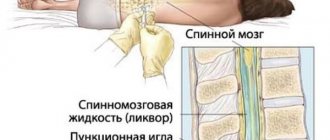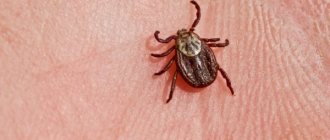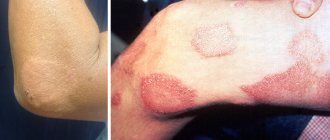Hepatosis is a toxic-allergic response of liver tissue to various damaging factors. As a result of this response, degenerative changes occur in the liver cells (in contrast to the inflammatory process in hepatitis). Symptoms such as general malaise, discomfort in the right hypochondrium, decreased appetite and dyspepsia are typical. Treatment is most effective when the disease is detected early. If you do not seek medical help, hepatosis can lead to liver cirrhosis or hepatitis.
General information
Fatty liver disease is also known as fatty liver, fatty liver, or hepatic steatosis (mistakenly known as liver stenosis). It is considered an independent syndrome or disease that is caused by fatty degeneration of liver cells. In the 60s of the last century, it was isolated as an independent disease after the introduction of puncture biopsy of liver tissue into practice.
The pathology is characterized by the deposition of fatty droplets in the extra- and (or) intracellular space of the liver. A morphologically important criterion for hepatosis is the content of triglycerides in the hepatic system above 10% of dry weight.
With non-alcoholic steatohepatitis, there is the same increase in liver enzymes and identification of specific morphological changes in liver biopsies, as with alcoholic hepatitis , with the only difference that patients with NASH do not abuse alcohol-containing drinks in volumes that can cause such damage to hepatocytes.
ICD-10 code for fatty liver disease: K70.0 Alcoholic fatty liver [fatty liver]
Forms and stages
In most cases, patients are diagnosed with a form of non-alcoholic fatty liver disease. This diagnosis has many synonyms - fatty degeneration, steatohepatitis, steatosis and others. Pathological changes begin when fat accumulation exceeds 10% of the weight of the cookies. There are 4 degrees of pathology:
- Zero. There are no clinical symptoms, small particles of fat are present in single liver cells.
- First. The size of fat deposits increases, their number now resembles individual lesions.
- Second. Fat deposits contain about half of the hepatocytes, intracellular obesity is diagnosed.
- Third. The accumulated fat continues to be deposited in the intercellular space, forming fat formations and cysts.
Pathogenesis
Fat is deposited in the cytoplasm of liver cells only when the rate of triglyceride formation in the liver exceeds the rate of their utilization. The latter process involves lipolysis of triglycerides, their incorporation into pre-B lipoproteins, oxidation of fatty acids and secretion into the bloodstream.
Regular changes in the form of fatty infiltration in the liver are observed with:
- decompensated form of diabetes mellitus ;
- chronic alcohol intoxication;
- protein deficiency (including nutritional origin);
- obesity;
- poisoning by toxic compounds;
- lack of lipotropic substances in exocrine pancreatic insufficiency.
The most common disorder of fat metabolism with characteristic fat deposition in the hepatic system is ketosis . The pathology is characterized by increased deposition of ketone bodies due to altered metabolism , which leads to their accumulation in organs and tissues in the decompensated form of diabetes mellitus. Quite often, along with fatty degeneration, gallbladder dyskinesia , sometimes in combination with cholelithiasis .
Reasons why fat may be deposited in liver cells:
- decreased production of lipoproteins of various densities in the hepatic system;
- excessive intake of free fatty acids into the hepatic system;
- functional liver failure caused by liver pathology;
- excessive formation and absorption of free fatty acids in the liver;
- slowing down beta-oxidation of free fatty acids in the mitochondrial system of hepatocytes.
Histological features
Brown liver atrophy is characterized by a decrease in the size of hepatocytes, however, their number is much greater than with its normal structure. The general structure of the hepatic system remains unchanged. Liver cells are reduced in volume mainly in the central lobules located near the central vein. The radial arrangement of the hepatic beams is disturbed, they are thinned. The cells themselves have an irregular oval and round shape. The nuclei are stained darker and reduced in size. In the cytoplasm there are many small grains of a yellowish-brown color, which gives the organ a brownish-brown color.
Classification
It is customary to distinguish two nosologically independent forms of fatty hepatosis:
- non-alcoholic steatohepatitis (toxic liver dystrophy);
- alcoholic fatty liver disease.
The non-alcoholic, toxic form is diagnosed in 7-8% of patients undergoing liver biopsy. The alcoholic form is detected 10 times more often.
Morphological forms according to the type of fat deposition in the hepatocyte lobule:
- focal disseminated variant (practically asymptomatic);
- zonal, pronounced disseminated variant (fat deposits accumulate in different areas of hepatocytes);
- diffuse variant (microvesicular, diffuse liver steatosis).
According to genesis there are:
- Primary hepatosis. The pathology is caused by various endogenous dysmetabolic disorders such as diabetes mellitus , obesity , and dyslipidemia .
- Secondary hepatosis. Develops under the influence of external influences that worsen metabolism.
The secondary form is registered with malabsorption syndrome , taking certain medications, after surgery on the digestive tract (gastroplasty for obesity, ileo-jejunal anastomosis, intestinal resection). Pathology can be observed during prolonged stay on parenteral nutrition, as well as in persons practicing fasting.
Hydropic liver dystrophy
The pathology is also known as hydrocele . Characterized by the appearance of vacuoles that contain cytoplasmic fluid. Gradually, as the fluid becomes overfilled, the cell structures decompose. The hydropic form can only be diagnosed by microscopic examination, because Externally, the liver organ appears without any special visual changes.
Fatty infiltration of the liver and pancreas
Let's figure out what it is. Fatty infiltration is characterized by the deposition of fat and the subsequent displacement of normal cell structures, which negatively affects the functioning of the organ. In addition to the liver, the pancreas can also be affected, fatty infiltration of which indicates severe metabolic disorders in the body. In this case, a diagnosis is made - steatohepatitis .
There are alcoholic and non-alcoholic steatohepatitis. Classification according to ICD 10 - K76.0 Pathology is divided according to the degree of damage and the degree of activity of the fatty process. At the initial stage, steatohepatitis of minimal activity is formed. In the absence of proper treatment, elimination of the causative factor and changes in lifestyle, the disease becomes severe.
What is pancreatic steatosis? Fatty damage to the pancreas is called steatosis.
Fully or partially limited products
The diet for liver hepatosis includes the following exceptions:
- Broths based on meat/fish and mushrooms, as well as first courses based on them.
- Fatty meat and fatty varieties of sea/river fish, poultry meat (goose and duck), smoked meats, sausages, salted fish, canned food, seafood.
- Products containing flavoring additives, preservatives, confectionery products with a long shelf life, freeze-dried products.
- Offal (liver, kidneys, brains), cooking/animal fat.
- Legumes and vegetables containing coarse fiber (radish, radish, turnip, white cabbage).
- Products rich in oxalic acid/essential oils (sour sauerkraut, sorrel, garlic, onion, spinach).
- Fried/hard-boiled eggs.
- Hot spices/herbs (horseradish, pepper, mayonnaise, mustard, ketchup).
- Heavy cream/milk, full-fat cottage cheese, chocolate, cakes, cheese curds, puff pastry, coffee, cocoa, cakes, muffins.
- Sour berries/fruits (black currants, cranberries, green apples, red currants).
- Alcohol-containing and carbonated sweet drinks, and mineral waters.
Table of prohibited products
| Proteins, g | Fats, g | Carbohydrates, g | Calories, kcal | |
Vegetables and greens | ||||
| canned vegetables | 1,5 | 0,2 | 5,5 | 30 |
| eggplant | 1,2 | 0,1 | 4,5 | 24 |
| swede | 1,2 | 0,1 | 7,7 | 37 |
| peas | 6,0 | 0,0 | 9,0 | 60 |
| bulb onions | 1,4 | 0,0 | 10,4 | 41 |
| chickpeas | 19,0 | 6,0 | 61,0 | 364 |
| cucumbers | 0,8 | 0,1 | 2,8 | 15 |
| salad pepper | 1,3 | 0,0 | 5,3 | 27 |
| parsley | 3,7 | 0,4 | 7,6 | 47 |
| radish | 1,2 | 0,1 | 3,4 | 19 |
| white radish | 1,4 | 0,0 | 4,1 | 21 |
| iceberg lettuce | 0,9 | 0,1 | 1,8 | 14 |
| tomatoes | 0,6 | 0,2 | 4,2 | 20 |
| dill | 2,5 | 0,5 | 6,3 | 38 |
| beans | 7,8 | 0,5 | 21,5 | 123 |
| horseradish | 3,2 | 0,4 | 10,5 | 56 |
| spinach | 2,9 | 0,3 | 2,0 | 22 |
| sorrel | 1,5 | 0,3 | 2,9 | 19 |
Berries | ||||
| grape | 0,6 | 0,2 | 16,8 | 65 |
Mushrooms | ||||
| mushrooms | 3,5 | 2,0 | 2,5 | 30 |
| marinated mushrooms | 2,2 | 0,4 | 0,0 | 20 |
Nuts and dried fruits | ||||
| nuts | 15,0 | 40,0 | 20,0 | 500 |
| peanut | 26,3 | 45,2 | 9,9 | 551 |
| seeds | 22,6 | 49,4 | 4,1 | 567 |
Cereals and porridges | ||||
| millet cereal | 11,5 | 3,3 | 69,3 | 348 |
Flour and pasta | ||||
| pasta | 10,4 | 1,1 | 69,7 | 337 |
| dumplings | 11,9 | 12,4 | 29,0 | 275 |
Bakery products | ||||
| buns | 7,9 | 9,4 | 55,5 | 339 |
| Rye bread | 6,6 | 1,2 | 34,2 | 165 |
Confectionery | ||||
| pastry cream | 0,2 | 26,0 | 16,5 | 300 |
| shortbread dough | 6,5 | 21,6 | 49,9 | 403 |
Ice cream | ||||
| ice cream | 3,7 | 6,9 | 22,1 | 189 |
Chocolate | ||||
| chocolate | 5,4 | 35,3 | 56,5 | 544 |
Raw materials and seasonings | ||||
| mustard | 5,7 | 6,4 | 22,0 | 162 |
| mayonnaise | 2,4 | 67,0 | 3,9 | 627 |
Dairy | ||||
| milk 4.5% | 3,1 | 4,5 | 4,7 | 72 |
| cream 35% (fat) | 2,5 | 35,0 | 3,0 | 337 |
| whipped cream | 3,2 | 22,2 | 12,5 | 257 |
| sour cream 30% | 2,4 | 30,0 | 3,1 | 294 |
Cheeses and cottage cheese | ||||
| parmesan cheese | 33,0 | 28,0 | 0,0 | 392 |
Meat products | ||||
| fatty pork | 11,4 | 49,3 | 0,0 | 489 |
| salo | 2,4 | 89,0 | 0,0 | 797 |
| bacon | 23,0 | 45,0 | 0,0 | 500 |
Sausages | ||||
| smoked sausage | 9,9 | 63,2 | 0,3 | 608 |
Bird | ||||
| smoked chicken | 27,5 | 8,2 | 0,0 | 184 |
| duck | 16,5 | 61,2 | 0,0 | 346 |
| smoked duck | 19,0 | 28,4 | 0,0 | 337 |
| goose | 16,1 | 33,3 | 0,0 | 364 |
Fish and seafood | ||||
| smoked fish | 26,8 | 9,9 | 0,0 | 196 |
| black caviar | 28,0 | 9,7 | 0,0 | 203 |
| salmon caviar granular | 32,0 | 15,0 | 0,0 | 263 |
| salmon | 19,8 | 6,3 | 0,0 | 142 |
| canned fish | 17,5 | 2,0 | 0,0 | 88 |
| salmon | 21,6 | 6,0 | — | 140 |
| trout | 19,2 | 2,1 | — | 97 |
Oils and fats | ||||
| animal fat | 0,0 | 99,7 | 0,0 | 897 |
| cooking fat | 0,0 | 99,7 | 0,0 | 897 |
Alcoholic drinks | ||||
| dry red wine | 0,2 | 0,0 | 0,3 | 68 |
| vodka | 0,0 | 0,0 | 0,1 | 235 |
| beer | 0,3 | 0,0 | 4,6 | 42 |
Non-alcoholic drinks | ||||
| soda water | 0,0 | 0,0 | 0,0 | — |
| cola | 0,0 | 0,0 | 10,4 | 42 |
| instant coffee dry | 15,0 | 3,5 | 0,0 | 94 |
| sprite | 0,1 | 0,0 | 7,0 | 29 |
| * data is per 100 g of product | ||||
Causes of fatty liver
Fatty deposits in the parenchymal cells of the liver appear as a result of the toxic effects of endogenous and exogenous factors. Other pathological conditions of the body, including starvation, can also lead to fat accumulation.
Causes of fatty liver and fatty hepatosis:
- diseases of the biliary tract and digestive system;
- formed intestinal bypass anastomosis;
- diabetes mellitus type 2;
- Wilson-Konovalov disease;
- obesity;
- long-term use of parenteral nutrition;
- malabsorption and maldigestion syndrome ;
- taking certain medications (estrogens, corticosteroids);
- chronic abuse of alcoholic beverages;
- celiac enteropathy;
- systemic diseases;
- viral, bacterial diseases.
Symptoms of hepatosis
The clinical symptoms of steatosis vary depending on the etiology of the disease.
In chronic alcohol intoxication with damage to the hepatic system, patients complain of shortness of breath during physical activity and anorexia. Most often, fatty liver disease is practically asymptomatic. It is extremely rare for patients to complain of discomfort and heaviness in the upper quadrant of the abdomen on the right. The pain increases with walking and movement.
There is no pain on palpation of the liver, except in cases where fat in the liver accumulates rapidly in the decompensated form of diabetes mellitus and alcoholism.
The complexity of this pathology lies in the fact that, despite significant morphological changes, most patients do not have specific symptoms of fatty liver hepatosis.
65-70% of patients are women, and most of them are overweight. Many patients have non-insulin-dependent diabetes mellitus. The vast majority of patients do not have signs of fatty liver disease, as characteristic manifestations of pathology of the hepatic system.
Allowed types of food
The question of what you can eat on a diet with fatty liver is relevant for everyone who is faced with such a disease. Despite the fact that therapeutic nutrition provides for many restrictions, a sufficiently large number of products can be included in the diet.
These include:
- Low-fat fish (cod, pike perch, perch, pollock, sea bass).
- Seafood.
- Egg white (almost unlimited).
- Bran bread (stale), crackers, crackers, biscuits.
- Lean meat (beef without streaks, cartilage, chicken breasts, veal tongue).
- Cereal porridge (cooked in water or vegetable broth).
- Dairy (low fat content).
- Potatoes, pasta (if you are not overweight).
- Sweets in small quantities (sugar, honey, marmalade).
- Greens and vegetables.
- Green tea, rarely coffee or chicory drink, mineral water, fruit juice.
It is important to know! It is important that the diet for liver hepatosis includes only easily digestible foods. Food prescribed for medicinal purposes must be low-carbohydrate to prevent the deposition of excess fat.
Tests and diagnostics
Palpation indicates an increase in liver size, but much depends on the concomitant pathology.
Sonographic signs
Often, after undergoing an ultrasound, the patient does not understand what the echographic signs of fatty hepatosis mean. In fact, the echogenicity of the liver tissue in fatty hepatosis may not be changed or may be increased. Signs of hepatosis of the liver on ultrasound are difficult to differentiate from fibrosis and cirrhosis of the liver . Therefore, to obtain more detailed information, it is recommended to undergo magnetic resonance or computed tomography. Thanks to these research methods, it is possible to accurately identify fatty deposits in the hepatic system.
Ultrasound examination reveals areas with increased echogenicity, and computed tomography identifies areas with a low absorption coefficient. However, the final diagnosis is made after a targeted liver biopsy, which is carried out under the control of computed tomography. Over time, lesions may change or completely disappear during therapy, which makes it possible to evaluate the dynamics.
Thus, the presence of fatty deposits can be accurately confirmed after a histological examination of the biopsy specimen. The materials obtained from the biopsy are stained with eosin and hematoxylan. Sections of hepatocytes reveal a nucleus displaced to the periphery and “empty” vacuoles.
In fatty hepatosis caused by long-term alcohol intoxication, together with large-droplet obesity of hepatocytes, the following is observed:
- deposits of hyaline Mallory bodies in hepatocytes;
- pericellular fibrosis , known as "creeping collagenization" near centrally located veins;
- swelling of hepatocytes;
- neutrophilic infiltration of intra- and interlobular sections of the liver.
In patients with fatty hepatosis, a natural increase in GGTP (g-glutamyl transpeptidase) is recorded, which may also indicate consumption of alcoholic beverages. The levels of albumin, bilirubin and prothrombin remain within normal values, but the alkaline phosphatase and the activity of serum transaminases increase.
In obesity, an increase in ALT and AST is detected, hypertriglyceridemia , dyslipidemia and other manifestations of metabolic syndrome .
If it is impossible to identify the true cause that led to the deposition of fatty bodies in the liver, they speak of an idiopathic or cryptogenic form of hepatosis.
Treatment of hepatosis
Systematization of the treatment of fatty hepatosis, given such a wide variety of causes that cause it, is considered difficult. First of all, treatment of fatty liver hepatosis should be aimed at eliminating the cause that causes the deposition of fatty droplets in the hepatic system. Therapy involves restoring the functioning of the biliary system. For this purpose, drug treatment is prescribed, drugs that negatively affect the functional state of the liver are discontinued. Activities should be aimed at improving the functional state of the liver. The consumption of alcoholic beverages and certain medications is completely excluded.
How to cure? After eliminating the causative factor, symptomatic, course treatment is prescribed.
After complete recovery, the patient should be observed by the attending physician for a year:
- Ultrasound control is carried out once every 6 months;
- Once every 3 months, biochemical analysis for ALT, AST;
- Once every 2 months, an examination is carried out by the attending physician.
Prevention
The disease can be prevented through a healthy lifestyle, a balanced and healthy diet, and optimal physical activity. A person should be active every day; walking and swimming are very useful. Despite the abundance of fast food and store-bought treats, it is recommended to completely exclude them from your diet and give preference to natural vegetables and fruits, lean meat and cereals.
It is very important to maintain your weight within normal limits, since obesity sharply increases the likelihood of not only liver diseases, but also others. Drinking alcoholic beverages in any quantity destroys hepatocytes. Endocrine and hormonal disorders are also considered dangerous. To timely identify the initial stages of steatosis, it is recommended to undergo preventive examinations and take a blood test at least once a year.
Fatty hepatosis is a dangerous condition that begins unnoticed and does not manifest itself for a long time. Lack of therapy increases the risk of irreversible changes and death. It is quite easy to prevent pathology, but this requires reconsidering your lifestyle and diet.
Treatment of fatty liver hepatosis with drugs
Hepatoprotectors that protect liver cells from the damaging effects of negative factors:
- Phosphogliv;
- Rezalut Pro;
- Essentiale Forte N;
- Essliver Forte;
- Heptral;
- Heptor.
Treatment of liver steatosis with herbal preparations:
- Allohol;
- Silimar;
- Gepabene;
- Legalon.
Ursodeoxycholic acid preparations to normalize the functioning of the biliary system;
- Urdoxa;
- Ursofalk;
- Ursosan.
Steatohepatitis is not a death sentence; fatty liver responds well to drug therapy in combination with changes in the patient’s lifestyle.
Treatment of fatty liver hepatosis with folk remedies
Fatty hepatosis can be treated with folk remedies only at the initial stage of the disease; in advanced cases, traditional medicine acts as an addition to the main drug treatment regimen.
You should not self-medicate with folk remedies; all methods of therapy must be discussed with your doctor, this will help avoid complications and allow you not to waste precious time.
Traditional methods are aimed at removing toxins and waste, restoring hepatocytes, improving metabolism in the liver system, losing weight and reducing the percentage of fat. Most medicines contain herbal ingredients.
For the treatment of fatty liver with folk remedies, the following are used:
- dog-rose fruit;
- St. John's wort;
- immortelle flowers;
- bran;
- milk thistle seeds;
- Pine nuts;
- turmeric.
Fatty infiltration of the liver and pancreas responds well to treatment at the initial stage of the disease, so you should not delay treatment, including traditional methods.
Hepatosis in pregnant women
Damage to the liver system in pregnant women is most often observed in the second and third trimesters. Pathological changes are formed against the background of increased load on the organs and multiple changes, some of which are associated with hormonal imbalance.
Cholestatic hepatosis in pregnant women is a dysfunctional liver disorder in which metabolic processes in hepatocytes are disrupted. The cholestatic variant develops due to malfunction of hepatocytes, which disrupts the bile acid . Due to their accumulation in the ducts, bile blood clots form. Blockage of the ducts leads to the penetration of bile components into the bloodstream.
Pregnant women complain of severe itching , especially in the palms of the hands. The forum for expectant mothers is inundated with questions about the prognosis of pathology and the risk of negative effects on the health of the fetus. Timely diagnosis and well-chosen treatment make the prognosis favorable.
Acute fatty hepatosis in pregnant women is extremely rare and is characterized by a very severe course. Maternal and perinatal mortality rates are excessively high. The acute version of hepatosis is difficult to diagnose due to the blurred clinical picture and the masking of the pathology as other liver diseases.
Expected benefit
Dietary nutrition has a complex effect on the liver during hepatosis. Competent compliance allows you to ensure a pronounced therapeutic effect, stop the development of pathology, and reduce the risk of complications. The benefits are explained by the following aspects:
- The metabolism of fats and carbohydrates is restored in the body.
- The level of cholesterol in the blood is normalized.
- The outflow of bile improves.
- The secretion of enzyme substances is stimulated.
- The digestive process is facilitated.
- The main pathological symptoms are eliminated.
- The patient may lose significant weight.
- Eliminates the risk of complications in pregnant women
Treatment of steatosis is a complex process that includes taking pills, physiotherapy, and diet. The importance of a healthy diet is because it helps eliminate excess fat and liver. By correcting the diet, the basic functions of the organ are normalized and the risk of life-threatening complications is eliminated.
Diet for fatty hepatosis
Diet 5th table
- Efficacy: therapeutic effect after 14 days
- Duration: from 3 months or more
- Cost of products: 1200 - 1350 rubles per week
Diet 8 table
- Efficiency: weight loss to the required level
- Time frame: long-term, until the expected effect is achieved
- Cost of products: 1120 - 1230 rubles per week
Diet for fatty liver hepatosis
- Efficacy: therapeutic effect after 3-6 months
- Terms: 3-6 months
- Cost of products: 1500-1600 rubles. in Week
Therapeutic nutrition is based on minimizing simple carbohydrates and animal fats in the diet. The diet is aimed at reducing insulin resistance and weight correction. Reducing body weight by even 10% significantly accelerates lipid and carbohydrate metabolism. Main directions in nutrition:
- Daily calorie content is 2800-3200 kcal. Calorie intake should increase due to fruits and vegetables.
- The daily amount of protein is 100-130 g. Animal proteins should account for 80 g, and the rest should be plant proteins.
- Half of the diet should be carbohydrates. The share of simple carbohydrates is no more than 25%.
- The proportion of fat is 0.8-0.9 g per 1 kg of weight. Vegetable fats should make up 60% of the diet.
Main dishes and products
The following must be excluded from the menu:
- pickled, salted, smoked, canned and fried foods;
- coffee, herbs and spices;
- carbonated and alcoholic drinks;
- meat broths, fatty fish, meat and dairy products;
- from vegetables - radishes, onions and garlic, legumes, except soybeans, as well as mushrooms.
Dishes should consist of boiled, steamed or baked products:
- fresh, steamed or baked vegetables;
- dairy, vegetable soups and vegetarian borscht;
- porridge - buckwheat, rice, oatmeal, millet;
- low-fat fermented milk products - cottage cheese, kefir, yogurt, low-fat and mild cheeses;
- steamed omelette or 1 boiled egg per day;
- dried fruits.
The liver loves: cucumbers, pumpkin, dill, carrots, beets, cabbage (cauliflower, white cabbage), beets (preferably in the form of freshly squeezed juice, drink 3 hours after squeezing it), corn, zucchini, parsley. Apples, bananas, and prunes have practically healing properties. Proteins include low-fat fish and natural cottage cheese. Water should be filtered before drinking; mineral waters directly from sources are useful - Narzan, Slavyanovskaya, Essentuki, Morshynskaya.
As a guide, you can use diet No. 5 from the table of tables according to Pevzner (see also what you can eat with pancreatitis, diet for cholecystitis).
Consequences of fatty liver
Long-term steatosis can be complicated by fibrosis with the risk of further degeneration into cirrhosis. It is important to understand that fatty hepatosis (fatty liver) is a completely reversible process - just reconsider your diet and lifestyle.
Prolonged exposure to several negative factors at once, as well as the complete lack of adequate therapy, provokes the transition of hepatosis to a severe form. The rate of development of fibrosis increases significantly if the patient has obesity , diabetes mellitus , viral hepatitis , as well as abuse of alcohol-containing beverages.
Fibrosis is also considered a reversible process, which is characterized by the growth of scar, connective tissue in place of damaged cells of the liver system - hepatocytes. Fibrosis is a protective mechanism by which the body tries to restrict healthy tissue from being damaged. Fibrosis responds well to treatment, but most often due to the lack of adequate therapy, liver cirrhosis .
Cirrhosis is an irreversible process of replacing liver tissue with coarse scar tissue. Characterized by a significant decrease in the number of functioning cells. At the initial stage, it is possible not only to stop the pathological process, but even to partially restore damaged structures. However, in severe cases, cirrhosis is fatal. The only possible way to save life is to transplant a donor liver.
What it is?
Hepatosis is a chronic process that is accompanied by obesity of hepatocytes and excessive accumulation of lipids in them. A change in the structure of cells leads to their damage and changes in the intercellular substance, which further provokes inflammatory-necrotic changes. Chronic course and hidden symptoms cause untimely treatment and the appearance of changes in the body that are very difficult to eliminate.
The long course of the pathology leads to the inability of the organ to perform its functions. One of the varieties of living hepatosis is alcoholic hepatosis, which appears in people who abuse alcohol. The pathogenesis of the disease remains the same - fat cells accumulate in hepatocytes, which change the structure and performance of the organ.
If the degeneration of the liver is not caused by alcohol, the pathology can be observed in a certain area of the organ, while, in general, the process is benign and does not threaten the patient’s life. Under the influence of unfavorable factors or excessive alcohol consumption, the pathology begins to progress, which leads to a life-threatening chain: fibrosis-cirrhosis-the need for organ transplantation or death.








